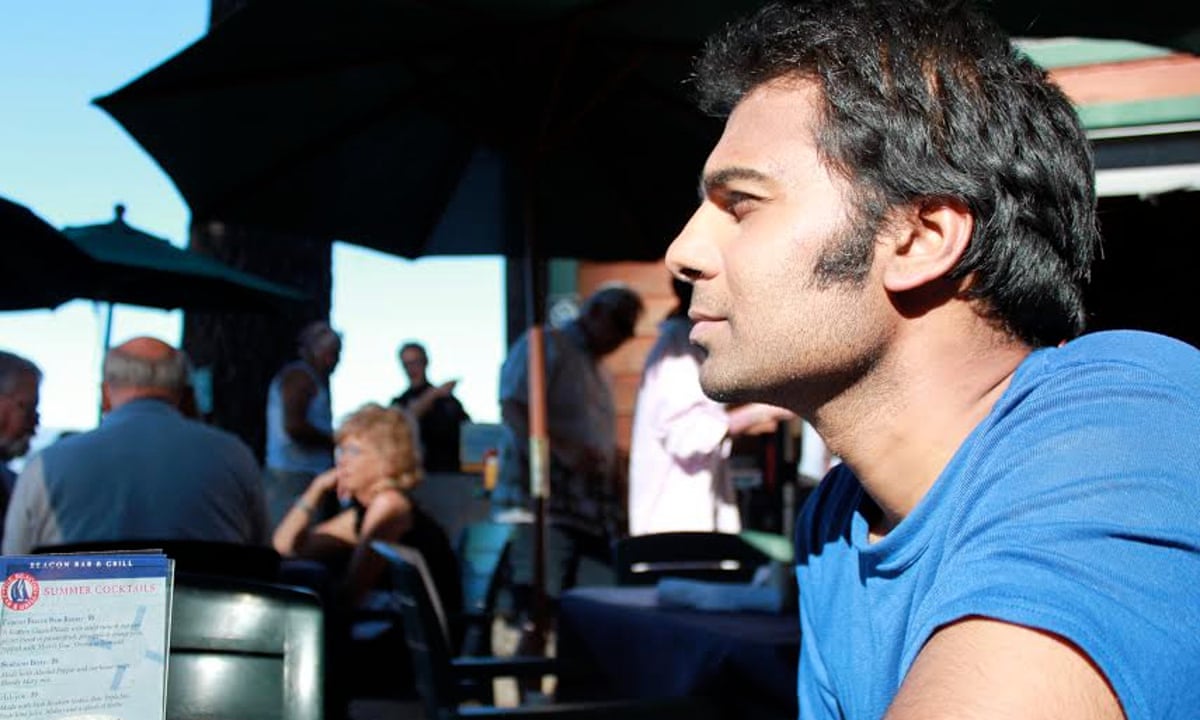“Until we stop harming all other living beings, we are still savages.” ~ Thomas A. Edison
Violence is unable to change anything for the better
“One is called to live nonviolently, even if the change one works for seems impossible. It may or may not be possible to turn the US around through nonviolent revolution. But one thing favours such an attempt: the total inability of violence to change anything for the better.” ~ Daniel Berrigan
Today, Aug. 28, is also the day in 1963, more than 200,000 people gathered in Washington, D.C., for the March on Washington for Jobs and Freedom, now known as the March on Washington. It is also the day the world first heard Martin Luther King’s “I Have a Dream” speech, which was delivered during the March on Washington for Jobs and Freedom on August 28, 1963. In the speech he called for an end to racism in the United States and called for civil and economic rights. If only we could be proud of how far we have come.
I’ve decided to include quotations that I like and that I receive from Pace e Bene here on my blog. This is another one of those.
Why is the reaction to a solar eclipse such an anomaly?
If only people watched, sung about, and worshiped the Sun and Moon and the Earth and the rest of Nature and the universe everyday as much as they do on days when they happen to align for a couple of minutes like they did yesterday, Aug. 21, 2017. A cosmic testament to the ancient short attention span of the human race.

An anomaly is defined as “something that deviates from what is standard, normal, or expected.” An eclipse is to be expected. Even surprising things are to be expected from Mother Nature, Earth Mother.
#eclipse2017 #totaleclipse

Take care of yourself and each other. Take care of your father and your mother because they’re the only ones you’ll ever have. Take care of your brothers and sisters, they, too, are unique to you and will usually be there when you need them most, just as you should be there when they need you. Take care of your friends because they, too, are unique to you and you’ll never have any others just like them. Take care of your home, because it, too, is unique to you and you’ll never have any other just like it. ~ cjzurcher
Picture taken at Lavender Pond Farm in Killingworth, Conn.
“When you come out of the storm, you won’t be the same person who walked in. That’s what this storm’s all about.” ~ Haruki Murakami
Brian Williams? Mass Media war poetry on national television?
This is f—-ed up!
What is he thinking?
Is that what people watch on their living-room-wall-size tv’s?
Brian Williams: “We see these beautiful pictures at night from the decks of these two U.S. Navy vessels in the eastern Mediterranean,” Williams said.
“I am tempted to quote the great Leonard Cohen, ‘I am guided by the beauty of our weapons.’ And they are beautiful pictures of fearsome armaments making, what is for them, a brief flight over to this airfield.”
Why not quote MLK?: “I believe that unarmed truth and unconditional love will have the final word.” MLK, Jr. Let’s get a grip, people.
It’s the birthday of Judy Blume, born in Elizabeth, New Jersey (1938)
From today’s Writer’s Almanac
It’s the birthday of Judy Blume, born in Elizabeth, New Jersey (1938), the best-selling author of more than two dozen books for young people.
She was 27 years old, with two preschool-aged children, when she began writing seriously. For two years, she received constant rejections. Then in 1970, she had her big breakthrough, with the young adult novel Are You There God? It’s Me, Margaret. It’s the story of 11-year-old Margaret Simon, the daughter of a Jewish father and Christian mother, and her adolescent attempts to make sense of things like religion, boys, and menstruation. The book was banned in many schools and libraries. It’s one of the most challenged books of the last third of the 20th century. But it’s also beloved by many, and it has been a big best-seller over the years.
She lives mostly in Key West, where she writes at a desk facing a garden. In the summer, she writes in a small cabin on Martha’s Vineyard. She always writes in the morning. When she’s working on a first draft, which she says is the hardest part, she writes seven days a week, even if only for an hour or two a day.
Blume is also the author of Tales of a Fourth Grade Nothing (1972), Otherwise Known as Sheila the Great (1972), Blubber (1974), The Pain and the Great One (1974), Starring Sally J. Freedman as Herself (1977), Superfudge (1980), Here’s to You, Rachel Robinson (1993), and recently, Going, Going, Gone! with the Pain and the Great One (2008). Her books have sold more than 80 million copies.
‘To be truly radical is to make hope possible rather than despair convincing.’
Sunday, January 1, 2017
“To be truly radical is to make hope possible rather than despair convincing.”
~ Pamela Haines, Philadelphia Quaker
I get these great inspirational emails from paceebene.org. Check them out. They’re good for a lot more than inspirational quotes, too.
At war with those who are supposed to keep us safe
Isn’t one of the government’s responsibilities to keep their people safe? It’s ironic I think that we seem to be so often at odds with the very powers that are supposed to keep us safe, fighting their actions that jeopardize the peace we work so hard to maintain.
Light | cjzurcher

From a spark to a flame.
Was it a spark that caused all this?
The Sun? The suns beyond our own?
Or two sticks being rubbed together
By two gods somewhere out there, or two worshipers —
Beyond our solar system, beyond our galaxy,
Beyond what we call the universe — somewhere
some say it was but a particle, a “God particle” —
“A particle?” you ask? Yes and it’s in a 17-mile long
subterranean vacuum tube somewhere in Switzerland.
If there were a god, I’d like him to be Swiss, carrying
a knife with a toothpick and tweezers.
Pebbles – a story of refugees in stones by Syrian artist Nizar Ali Badr | KEDISTAN
 I learned about this work from a Twitter post #Pebbles – a story of refugees in stones by Syrian artist Nizar Ali Badr.
I learned about this work from a Twitter post #Pebbles – a story of refugees in stones by Syrian artist Nizar Ali Badr.
What gorgeous work from sculptor Nizar Ali Badr. If you have problems reading French, please visit the link at the bottom of this blog post and copy and paste into translate.google.com and look at all the photos of some of his sculpture work while you’re there. It’s beautiful.
 Le sculpteur syrien Nizar Ali Badr est un homme discret. Les mots ne sont pas son truc. Lui c’est les pierres.
Le sculpteur syrien Nizar Ali Badr est un homme discret. Les mots ne sont pas son truc. Lui c’est les pierres.
Je ne sais rien de lui, ni d’où il vient exactement, ni où il est juste maintenant. Je trouve sa trace sur deux, trois sites turcs. Emus par ses compositions sur les réfugiés syriens, ils présentent Nizar Ali comme « migrant ».
Sur son Facebook je vois qu’il habite à Lattaquié en Syrie. Y est-il encore? Sinon, où a-t-il atterri ? J’aurais voulu tellement en savoir plus. Je ne parle pas l’arabe. J’essaye alors désespérément de déchiffrer ses rares mots en traduisant avec des outils médiocres. Malgré l’approximation des traductions, je ressens la sagesse, la simplicité, une immense amour pour l’humanité, et l’espoir. Ces mots rejoignent totalement la poésie qui découle de singulières pierres, touchées par les mains d’artiste.
Source: Les pierres de l’artiste syrien Nizar Ali Badr | KEDISTAN
Samantha Bee’s take on the Syrian refugee crisis
In the second part of her special on the Syrian refugee crisis, the “Full Frontal” host Samantha Bee teaches refugees what they need to know about the United States.
For more visit TruthDig
Satellite data gives hope to stopping deforestation
 A good use of technology has arrived!
A good use of technology has arrived!
A satellite-based alert system could prove a potent weapon in the fight against deforestation. As few as eight hours after it detects that trees are being cut down, the system will send out e-mails warning that an area is endangered. That rapid response could enable environmental managers to catch illegal loggers before they damage large swathes of forest.
Source: Satellite alerts track deforestation in real time : Nature News & Comment
10 Things You’ve Gotta Know About the Fretboard | LESSON

EVER FEEL A LITTLE OUT OF TOUCH OR just plain lost on certain parts of the guitar fingerboard? You’re certainly not alone. Consider this: A standard-tuned, 6-string guitar with a 22-fret ’board has a range just shy of four octaves and contains five middle Cs, while a full-size piano keyboard covers over seven octaves yet it has only one middle C. What’s up with that?!? It’s simply the nature of the instrument. By design, the keyboard relegates any given pitch to a single key, while the guitar fingerboard offers anywhere from one to five different string and fret locations for the same note. These multiple repetitions of the same pitch afford guitarists many options for where to play any given note, but they also cause considerable confusion for beginners or players who often feel lost above the 5th fret, particularly on the inside four strings.
Source: 10 Things You’ve Gotta Know About the Fretboard | LESSON
The 7 Step Evening Ritual That Will Make You Happy
Nobel Prize-winning psychologist Daniel Kahneman and his colleagues have shown that what we remember about the pleasurable quality of our past experiences is almost entirely determined by two things: how the experiences felt when they were at their peak (best or worst), and how they felt when they ended. This “peak-end” rule of Kahneman’s is what we use to summarize the experience, and then we rely on that summary later to remind ourselves of how the experience felt.
Johnny Cash’s ‘Ring of Fire’ like may never have heard it before
From the Flip Wilson Show
‘When Breath Becomes Air’: How to live, by a doctor who died at 37
 This fast-selling memoir by an idealist neurosurgeon facing an early death from cancer gains power and poignancy from its detailed descriptions and reflections on mortality. The power of this book lies in its eloquent insistence that we are all confronting our mortality every day, whether we know it or not. The real question we face, Kalanithi writes, is not how long, but rather how, we will live – and the answer does not appear in any medical textbook. It brings him back, at last, to the books of poetry he left gathering dust when he entered medical school.
This fast-selling memoir by an idealist neurosurgeon facing an early death from cancer gains power and poignancy from its detailed descriptions and reflections on mortality. The power of this book lies in its eloquent insistence that we are all confronting our mortality every day, whether we know it or not. The real question we face, Kalanithi writes, is not how long, but rather how, we will live – and the answer does not appear in any medical textbook. It brings him back, at last, to the books of poetry he left gathering dust when he entered medical school.
Source: When Breath Becomes Air by Paul Kalanithi review – how to live, by a doctor who died aged 37
Goethe quote about taking action
“Whatever you think you can do or believe you can do, begin it. Action has magic, grace and power in it.” ~ Goethe
Paris Review – The Art of Fiction No. 94, E. L. Doctorow

“One of the things I had to learn as a writer was to trust the act of writing. To put myself in the position of writing to find out what I was writing. I did that with World’s Fair, as with all of them. The inventions of the book come as discoveries. At a certain point, of course, you figure out what your premises are and what you’re doing. But certainly, with the beginnings of the work, you really don’t know what’s going to happen.”
Source: Paris Review – The Art of Fiction No. 94, E. L. Doctorow
Addicted to Distraction | NYTimes
Unfortunately we all are getting to know this one a little too well. …Fight it, fight it!
ONE evening early this summer, I opened a book and found myself reading the same paragraph over and over, a half dozen times before concluding that it was hopeless to continue. I simply couldn’t marshal the necessary focus.
I was horrified. All my life, reading books has been a deep and consistent source of pleasure, learning and solace. Now the books I regularly purchased were piling up ever higher on my bedside table, staring at me in silent rebuke.
Instead of reading them, I was spending too many hours online, checking the traffic numbers for my company’s website, shopping for more colorful socks on Gilt and Rue La La, even though I had more than I needed, and even guiltily clicking through pictures with irresistible headlines such as “Awkward Child Stars Who Grew Up to Be Attractive.”
During the workday, I checked my email more times than I cared to acknowledge, and spent far too much time hungrily searching for tidbits of new information about the presidential campaign, with the election then still more than a year away.
Source: Addicted to Distraction






